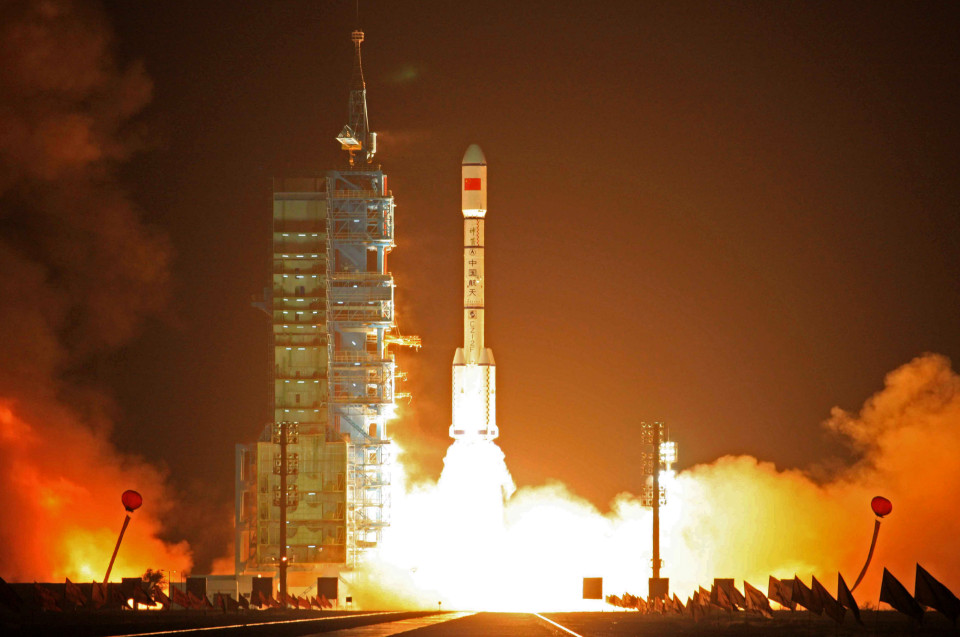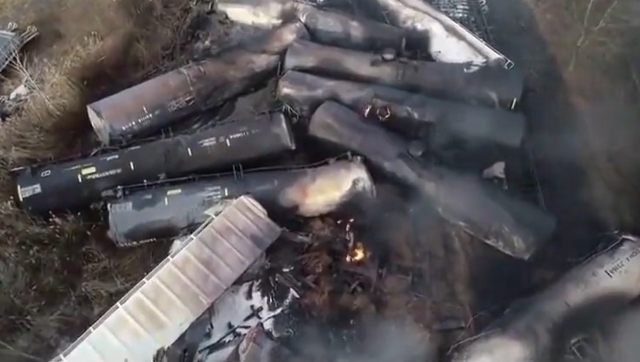
A rocket booster used to launch a satellite into orbit exploded shortly after landing in China’s Shaanxi province on Sept. 7 – narrowly missing a nearby school. The probe managed to reach orbit, but the Long March 4B rocket crashed to earth before orange smoke erupted from the rocket’s remains.
The rocket containing the new Gaofen-2 satellite was launched earlier that day from the Taiyuan Satellite Launch Center in northern China. Its first stage was successfully jettisoned during the launch, but veered off course during the descent – heading straight towards the town of Gaoyao, part of Luonan county.
Video footage captured near Lilong village in Gaoyao town, where the rocket landed, made rounds on Chinese social media site Weibo.
The rocket’s descent was captured in footage of the rocket’s descent, along with bystanders in the background shouting once they saw it head towards a nearby school. Another clip, which appeared to be taken at a schoolyard, showed orange smoke billowing from the crash’s location while children’s screams could be heard in the background.
No injuries were reported after the crash, but the Long March 4B’s fuel contains toxic chemicals such as hydrazine and nitrogen tetroxide that can cause serious health problems to those who come into contact with the mix.
Eye in the sky: China has been putting satellites in orbit for surveillance purposes
Despite the mishap with the Long March 4B rocket, the Gaofen-2 satellite it carried successfully made it to orbit. The satellite joins others launched as part of China’s High-resolution Earth Observation System, which was originally started in 2010.
A report by Space.com described the Gaofen-2 as an optical observation satellite that can capture high-resolution images. According to Chinese state media agency Xinhua, data captured by the Gaofen-2 satellite will be used for land surveys, road network design, city planning, land rights confirmation and more. In addition, the newly launched satellite will also offer information and support for China’s Belt and Road Initiative.
As part of its space program, China launches its spacecraft from three inland locations that originally provided security during the Cold War period. The government established a coastal launch site in Wenchang – similar to the Kennedy Space Center in Florida – but this site can only launch newer Long March 5 and 7 rockets. Coastal launch sites are considered less dangerous than inland ones as any jettisoned boosters can safely fall into the ocean.
Regardless, the risk of rocket boosters crashing into populated areas near the launch sites has failed to deter China from conducting launches from these inland locations.
Prior to the Gaofen-2 launch, China successfully launched three satellites on two rockets in July — all in a span of three days.
A Long March 4B launched on July 2 carried the Gaofen and Xibaipo satellites. According to Chinese state media, the Gaofen observation satellite will be used for exploration and protection of natural resources, development of agriculture and rural areas and emergency management. Meanwhile, the Xibaipo satellite launch is aimed at popularizing space science among teenagers by transmitting voice recordings and images from space.
Two days later, China launched the Shiyan-6 satellite into orbit. Chinese media said the satellite was meant for “space environment study and related technology experiments.” The Shiyan series satellites are understood to be similar to the Yaogan series satellites that are used for military purposes.
The successive launches raise concerns about whether China is also using them to spy, not just on its own people, but on its neighbors and rivals in the region. Earlier this year, questions were raised about whether Chinese “civilian” satellites were being used to spy on a Japanese Air Self Defense Force base in Okinawa.
With Beijing having many competing territorial claims with a number of other countries around it, it may be ramping up surveillance in an attempt to tighten its control on these disputed regions.
Learn more about Chinese surveillance methods and technologies at Surveillance.news.
Sources include:
Please contact us for more information.





















